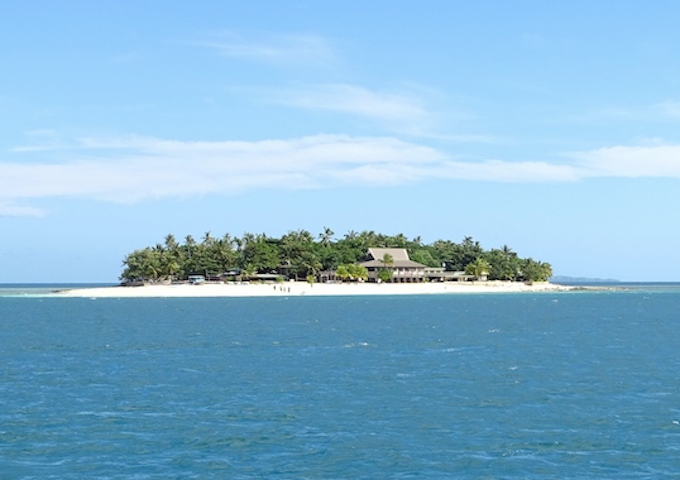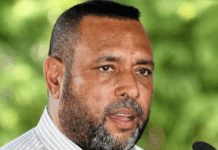
By Sheryl Lal and Akansha Narayan in Nadi, Fiji
Although Fiji was unaffected by the first wave of covid-19, its tourism sector — the lifeblood of the economy — has been devastated by border closure across the world due to the pandemic in the past two years.
Thus, when the Fijian Tourism Expo (FTE) returned after a break of two years, Fiji Tourism’s CEO Brent Hill was in an upbeat mood, especially because they have been able to attract more than 500 participants to the Expo in these competitive times for the travel industry.
But, having experienced the vulnerabilities, sustainability was very much in focus during presentations at the event here.
In 2022, Tourism Fiji comes with a vision to “inspire the world to come and experience Fiji — where happiness finds you” and our purpose is to “ensure that Fiji is promoted and marketed as a tourist destination for the purpose of maximising sustainable and long terms benefits to Fiji”, said Hill, in presenting a brief overview of their past achievements and their two-year strategic plan to the FTE.
The 8th FTE was held on May 11-13 at the luxury Sheraton Beach Golf and Spa Resort near Nadi, the gateway to Fiji where its international airport and many tourist resort islands are located.
The three-day event attracted more than 88 exhibiting companies, 90 buyers and 10 media delegates eager to learn the strategic plan Tourism Fiji has set for the small island nation.
The semi-government agency was supported by Fiji’s Ministry of Commerce, Trade, Tourism and Transport and was declared opened by Minister Faiyaz Koya, who highlighted the negative impact of covid on the tourism industry.
‘Guided by robust policies’
“During this time, we were guided by robust policies that led to our border re-opening,” he said in his opening address.
“Our out-of-work tourism workers were among those supported by half a billion dollars (US$230 million) in direct and indirect assistance paid by the Fijian government. We took the last two years as an opportunity to re-invest.
“From upgrading our tourism facilities and renowned hospitality, to piloting new products.”
Hill’s presentation at the FTE highlighted that during the pre-pandemic period, the tourism sector represented 38 percent of the Fijian economy bringing in 36.5 percent employment making up over 118,000 jobs in a population of just over 896,000.
In 2019, the overseas visitor economy in Fiji was worth F$3 billion (US$1.37 billion) and had attracted 960,000 international arrivals, mainly from Australia, New Zealand, Europe and the United States.
Fast forward two years later into the post-pandemic period, the plan of tourism Fiji is to increase the visitor economy to F$3.37 billion.
Also, a high end goal of attracting 1 million international visitors by 2024 has been set. Hill highlighted that the two year strategic plan, 2022 to 2024, was strategised after consultations were done by meeting with tourism industry and also seeking people’s feedback on what Tourism Fiji’s priorities should be.
Six key priorities
From these consultations, they have pulled out six key priorities for the two year plan.
Sustainability is a key ingredient of the plan that includes shaping perceptions of Fiji, promoting the value of tourism to Fiji and enabling an efficient, high performing and innovative team to take the industry forward.
“For Tourism Fiji, it is very important as an organisation that we set our values. As a team, we really wanted to identify the core of who we are as a true Fijian and I’m very proud of the values that we actually came up with as a team and we want to make a difference,” said Hill.
Citing data from the global benchmarking agency Smith Travel Research (STR), Hill said that in 30 of Fiji’s key hotels that accounts for about 8500 rooms, the occupancy was running at 20 percent levels.
“That is a stunning rebound recovery and not to be sneezed at,” he points out, adding, “I know that there is dozens of tourism organisations around the world that would be begging to have their occupancy at those kinds of levels.”
Many of the exhibition booths at the FTE represented luxury boutique type resorts in small “paradise” islands that surround Fiji’s main islands of Viti Levu and Vanua Levu.
Many of these islands are so small that it may include just the resort which is usually privately owned (leased from traditional land owners).
Resort occupies whole island
One such resort is Beachcomber Island, just 17 km and 40 minutes by fast ferry from Port Denarau, the site of the Expo.
The resort occupies the whole of the privately owned 8 ha island, where staff works on a 21 day shift followed by 7 days leave to go back to “civilisation”. The resort which is very popular with foreign tourists was closed from 20 March 2020 until April 1 this year.
The resort manager, Nemia Merani, that she had to keep a skeleton staff of 5 during this time to help maintain its facilities, even though they had no income coming.
Pre-pandemic they used to employ 50-60 staff but now they only have 15-20 staff on the island.
“People from overseas are still hesitant to come,” she said. “Things that help us are day visitors not only weekends but weekdays too.
“We are selling to locals everyday. During the weekend we have a surge in numbers and after this we go right down again.”
Ironically, this resort was too expensive for local tourists pre-pandemic but the prices have been reduced for locals now.
‘Overseas visitors slowly picking up’
“Overseas visitors — especially from Australia — are slowly picking up and if that continues we will survive,” Merani said optimistically.
From presentations made at the Expo, the pandemic has also raised awareness among tourism operators here about the sustainability of the industry and the need to tap into local resources much more.
Even the five-star Sheraton hotel where the Expo was held made a special presentation on how they are developing a supply chain of local farmers feeding into their menus.
Since the borders were opened on December 1 last year, according to government figures, 119,000 tourists have arrived in Fiji, with 46,000 coming in April alone.
“I believe that we can work together collectively for providing the value of tourism to Fiji,” argues Hill pointing out the networking that took place here.
“Part of that is that we need to continue to tell the story of tourism and tell the story of what it is that we’re all about.”
Sheryl Lal and Akansha Narayan are final year journalism students at the University of the South Pacific in Suva, Fiji. This story ror In-Depth News was initially published in USP’s student journalism newspaper Wansolwara. Both IDN and Wansolwara collaborate with Asia Pacific Report.












































